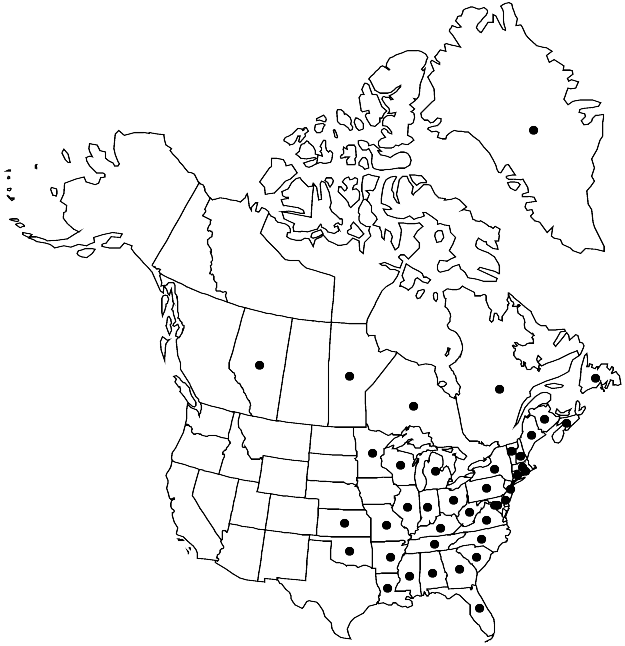Fontinalis sphagnifolia
Taxon 11: 221. 1962.
Plants to 60 cm, green, yellowish, reddish, or brownish. Stems slender to robust, flaccid or rigid, stem and branch apices tightly long-attenuate; axillary hairs 500–650 µm, 5–8 cells, basal-cell quadrate, red, distal cells long-cylindric, hyaline or reddish. Leaves weakly or strongly dimorphic. Stem-leaves appressed or loosely erect when dry or moist, flaccid or firm, ovate, ovatelanceolate, oblong-lanceolate, lanceolate, or linear-lanceolate, concave throughout, weakly concave, or plane, 3–6 mm; margins erect or somewhat plane at base, not reflexed proximally when dry, erect-incurved or plane distally; apex acute to obtuse; medial laminal cells long-rhomboidal, 60–120 × 6–15 µm. Branch leaves similar, smaller, or erect to erect-spreading, narrowly lanceolate or linear-lanceolate, concave to subtubular, 2–3.5 mm; margins erect to involute; apex long-acuminate. Perigonia with leaves 0.8–1.1 mm. Perichaetia with leaves oval to suborbiculate, 2.4–3.4 mm, apex obtuse. Seta 0.1–0.2 mm. Capsule immersed to slightly emergent, subcylindric to cylindric, 2–2.5 mm; operculum conic, 1 mm; endostome trellis imperfect. Calyptra 1.3–1.5 mm. Spores 16–18 µm.
Habitat: Rock, roots, stumps, logs, in streams often seasonally dry
Elevation: low to moderate elevations (0-1000 m)
Distribution

Greenland, Alta., Man., N.B., Nfld. and Labr. (Nfld.), N.S., Ont., Que., Ala., Ark., Conn., Del., D.C., Fla., Ga., Ill., Ind., Kans., Ky., La., Maine, Md., Mass., Mich., Minn., Miss., Mo., N.H., N.J., N.Y., N.C., Ohio, Okla., Pa., R.I., S.C., Tenn., Vt., Va., W.Va., Wis.
Discussion
Fontinalis sphagnifolia has two different leaf forms. Leaves formed after a prolonged dry period (vernalis expression) or in sluggish water are medium-sized, loosely flaccid, ovate-lanceolate, plane to weakly concave, and have plane or erect to incurved apical margins. Leaves formed late in the aquatic period (aestivalis expression) or in faster moving streams are smaller, stiff, linear-lanceolate, strongly concave, and have consistently erect to incurved apical margins. Many specimens have a combination of vernalis expression and aestivalis expression leaves. The leaves in the lescurii expression are small and linear-lanceolate but flaccid, and have a mixture of plane and erect apical margins. When well developed, the vernalis expression of F. sphagnifolia has stem leaf apices with quadrate to short-rhomboidal laminal cells, erroneously considered an important feature of the species. F. dalecarlica differs in having ovate-lanceolate to lanceolate leaves with plane to erect apical leaf margins. Large expressions of F. sullivantii can be similar in size and aspect to the lescurii expression of F. sphagnifolia, but that species has consistently plane apical leaf margins.
Selected References
None.